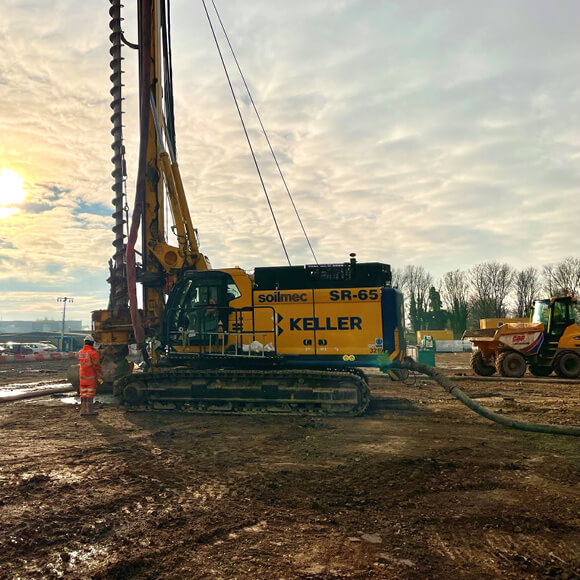.png?width=580&height=580&ext=.png)
Fujifilm, Project Borealis
Seymour Civil Engineering approached Tensar at tender stage to value engineer a large piling platform where a 30kN/m biaxial geogrid had initially been proposed to reinforce the platform. Could Tensar offer further savings by designing a Mechanically Stabilised working platform utilising their best performing geogrid, Tensar InterAx, with the tried and tested T-Value design approach?
Benefits
- Tensar MSL incorporating Tensar InterAx geogrid halved the platform thickness compared to the original BR470 design which suggested a 30kN/m biaxial geogrid
- Time and carbon savings due to reduced excavation on site
- Estimated £60,000 reduction in construction cost
- ‘Design & Supply’ service level provided by Tensar
The initial design used illustrative calculations in BR470, proposing to use a 30kN/m biaxial geogrid. Seymour Civils were looking for a competitive advantage in their tender and this solution did not offer sufficient project savings, therefore, a technical and commercial alternative was needed. The project required excavation into existing ground and so minimising this would be beneficial to the cost and sustainability credentials.
A Mechanically Stabilised Layer (MSL) incorporating Tensar InterAx geogrid was designed using the Tensar T-Value methodology. This methodology, developed following guidance from the BRE (authors of BR470) has been shown to offer engineers a viable and realistic alternative to the often-conservative BR470 approach. This solution reduced the platform thickness by approximately half which gave the contractor a commercial advantage at tender stage due to the significant cost, time and carbon savings proposed by Tensar.



.png?width=580&height=580&ext=.png?width=300)